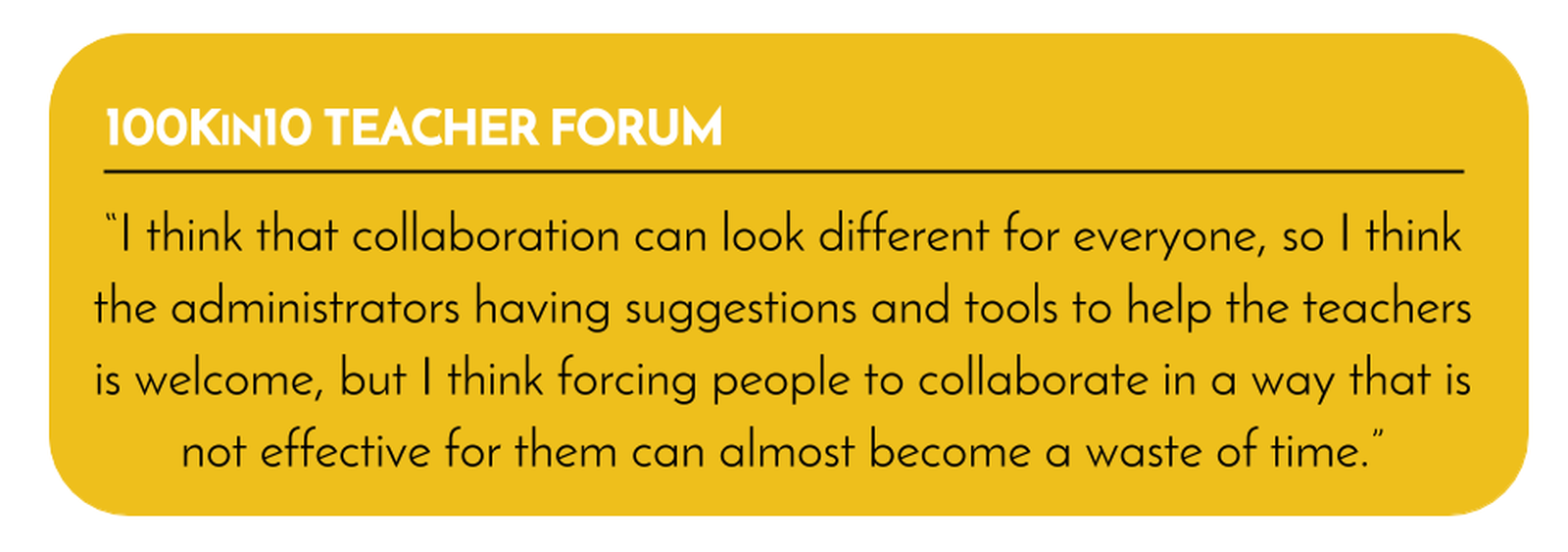It’s More Than Schedules: Teacher Collaboration and Innovative Instruction

June 1, 2018
We launched the 100Kin10 Teacher Forum to get a better pulse on what’s happening in schools and classroom across the country, directly from STEM teachers themselves.
During our second listening session with the Teacher Forum, teacher members discussed their experiences with school environments, systems, and schedules that enable innovative instruction and teacher collaboration. They shared stories of successful and failed collaboration, identifying the factors that many of them have found create a supportive school environment for innovation and experimentation.
We heard four common themes from Teacher Forum members:
1) The best collaboration is teacher-driven.
The best collaboration occurs when teachers shape it – driving the content, generating new ideas, making decisions, and implementing plans. Teachers know what challenges they are facing and what would be most helpful for them in the classroom. They need the flexibility to choose how to use collaboration time to make it most effective for their teaching and their student’s learning.

2) Administrators are fundamental to teacher collaboration.
Common periods are necessary, not sufficient, for collaboration. Teachers need an enabling environment and are quick to point out that this starts with administration. School leadership support is critical to ensuring teachers have the time and autonomy to drive collaboration.

3) Continued experimentation and learning by teachers leads to innovation.
Administration can also encourage innovation by creating a school environment of continued learning. When teachers are able to take on the role of students and learn new information, it can spark the desire to look at lessons in a new way and experiment with different instructional tactics. Moreover, it is important that teachers feel comfortable with both collaboration and content. They need background knowledge to build on or support from content specialists to have the confidence to innovate.

4) Collaboration and innovation rarely emerge from perceived success.
One could assume that when students appear to be learning and performing well, there will be greater opportunity and freedom to test out new approaches. However, the opposite rings true in most schools.
Administrators often fear changing from the status quo when test scores are high, resulting in fewer opportunities for teachers to experiment with co-planning or co-teaching or with new approaches to teaching. But when school leaders are struggling to identify solutions, they are often more open to innovation. As a result, many teachers note that low test scores can lead to greater opportunity for teachers to try something new.